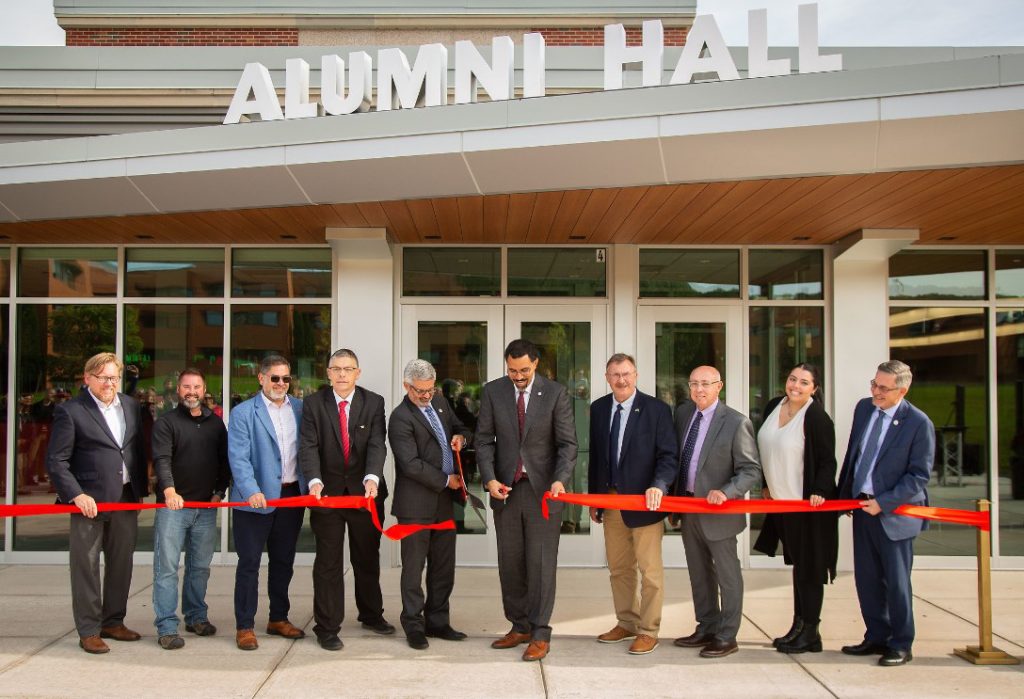
Alumni Hall Ribbon-Cutting Heralds New Era in Building
By DAN SULLIVAN
ONEONTA
Energy consumed by buildings accounts for some 40 percent of all greenhouse gas emissions in the U.S. If the country is to meet its climate goals, it is imperative that this usage be reduced. SUNY Oneonta took a giant step in that direction by completing an energy upgrade to Alumni Hall, a move that was recognized in a ribbon-cutting ceremony last week attended by SUNY Chancellor John King.
Alumni Hall dates back to 1958, a time when buildings were heated by coal or oil, and electricity was produced in the same way. Fast forward 65 years, and Alumni Hall is now an effectively carbon-neutral building. Carbon emissions from the 47,000-square-foot facility equal 3.2 pounds per square foot per year; these are offset using renewable energy credits, thus rendering the carbon neutral status. By comparison, conventional buildings produce 15 pounds of carbon per square foot per year. Alumni Hall alone reduces the campus carbon footprint by 130 tons per year.
The building is heated and cooled by a geothermal ground-source heat pump system. Geothermal systems draw air from geothermal wells that produce constant temperatures easily raised and lowered to meet heating and cooling needs very efficiently. The wells drilled for Alumni Hall go down 499 feet—a depth just shy of the need for a New York State Department of Environmental Conservation mining permit.
Lachlan Squair, the facilities director at SUNY, explained the drill depth, “Until very recently, geothermal wells were subject to limits related to mining in New York State. Fortunately, a new law has been passed allowing these wells to go much deeper. Our next project will be easier and possibly less costly.”
That is good news, as the university has launched conversion of a second campus building to geothermal net-zero.
In addition to energy savings, Alumni Hall provides many other benefits to the SUNY Oneonta community. The building houses several new features that enhance student learning: state-of-the-art classrooms; a stock trading simulation space; a business innovation space; areas for student group study and collaborative work; and an executive venue that will be an ideal location for conferences, presentations, and board meetings. As a candidate for LEED-Gold certification, the building offers a healthy learning and work environment through its use of upgraded ventilation and filtration systems, virtually eliminating the danger of indoor air pollution.
The opening of Alumni Hall is the final step in the 2013-23 campus Facilities Master Plan, and it also represents the first step in the university’s Clean Energy Master Plan, which provides a road map to long-term decarbonization.

